Abstract
The technique of electrical stimulation of the brain via scalp electrodes has been used to activate corticospinal pathways in intact man. The intensity of stimulation was adjusted to be below the threshold necessary to evoke a direct electromyographic response when the muscles being tested were totally relaxed. Changes in spinal cord excitability were measured using H-reflex (monosynaptic) testing. By this means it was found that subthreshold scalp stimulation can produce a descending corticospinal volley even in the absence of a direct muscle response. The time course of changes in spinal cord excitability was evaluated by evoking test H reflexes at different intervals relative to the scalp stimulus. In wrist and finger flexor muscles of seven subjects, a single subthreshold scalp shock produced an initial peak facilitation of the H reflex which on average lasted for 2.5 ms. The end of the initial facilitation was marked by a return of the H reflex towards basal levels and on one occasion by a frank inhibition. It is suggested that the initial facilitation is produced by arrival at the motoneurones of monosynaptic excitatory post-synaptic potentials (e.p.s.p.s) and is truncated by the subsequent arrival of disynaptic inhibitory post-synaptic potentials (i.p.s.p.s). The initial facilitation was followed by a second phase of facilitation of the H reflex. The second phase was weaker, more variable and longer lasting (from 5 to 20 ms) than the first phase. The threshold of scalp stimulus intensity required to produce an effect on the H reflex was the same for the first and second phases of facilitation. Several possible explanations are discussed for the mechanism responsible for the late and long-lasting facilitation. In two subjects wrist and finger extensor muscles were studied. The time course of H-reflex changes was similar to that of the flexors except that the initial facilitation was followed by a frank inhibition in both subjects. In one subject thenar muscles and tibialis anterior were studied and behaved similarly to wrist and finger flexor muscles. Effects on the soleus H reflex was studied in seven subjects. In five of these subjects, in contrast to the other muscles studied, the initial event was an inhibition of the H reflex. This inhibition also could be seen preceding the usual period of facilitation in averaged rectified surface electromyogram (e.m.g.) records when scalp stimuli were given during weak voluntary activation of soleus.(ABSTRACT TRUNCATED AT 400 WORDS)
Full text
PDF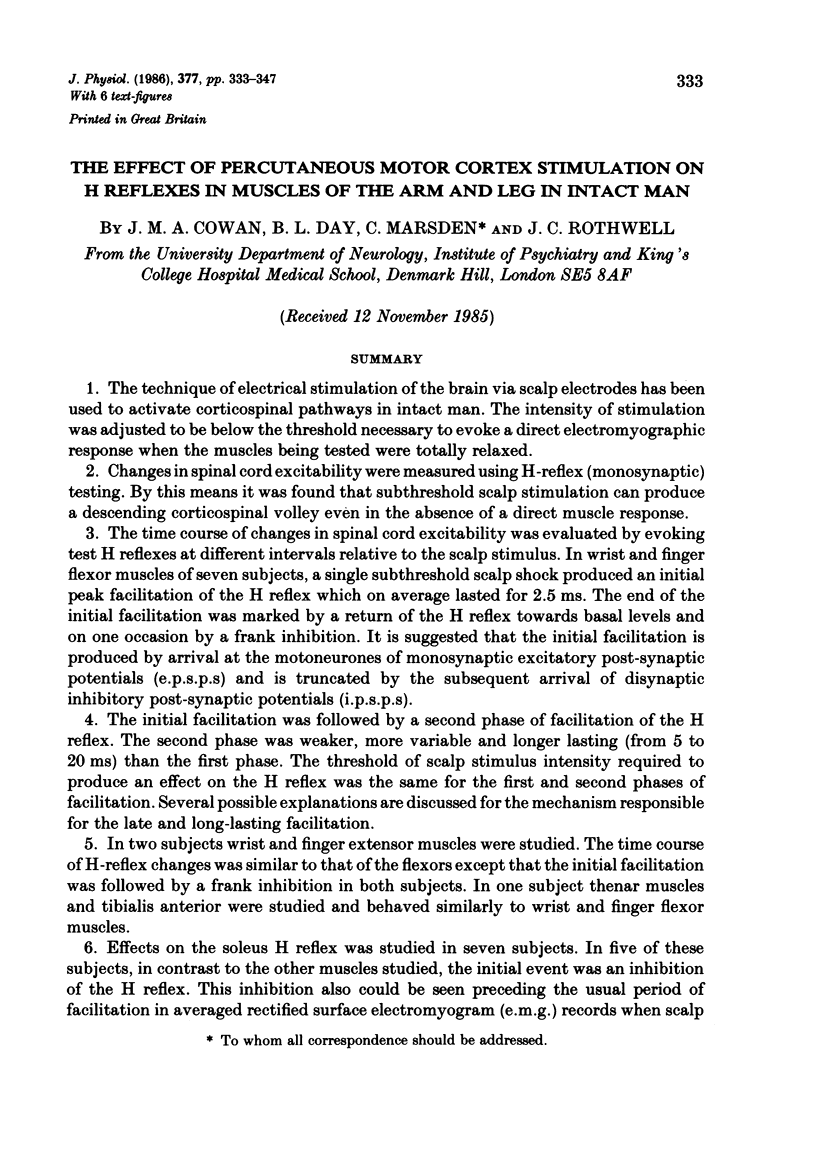
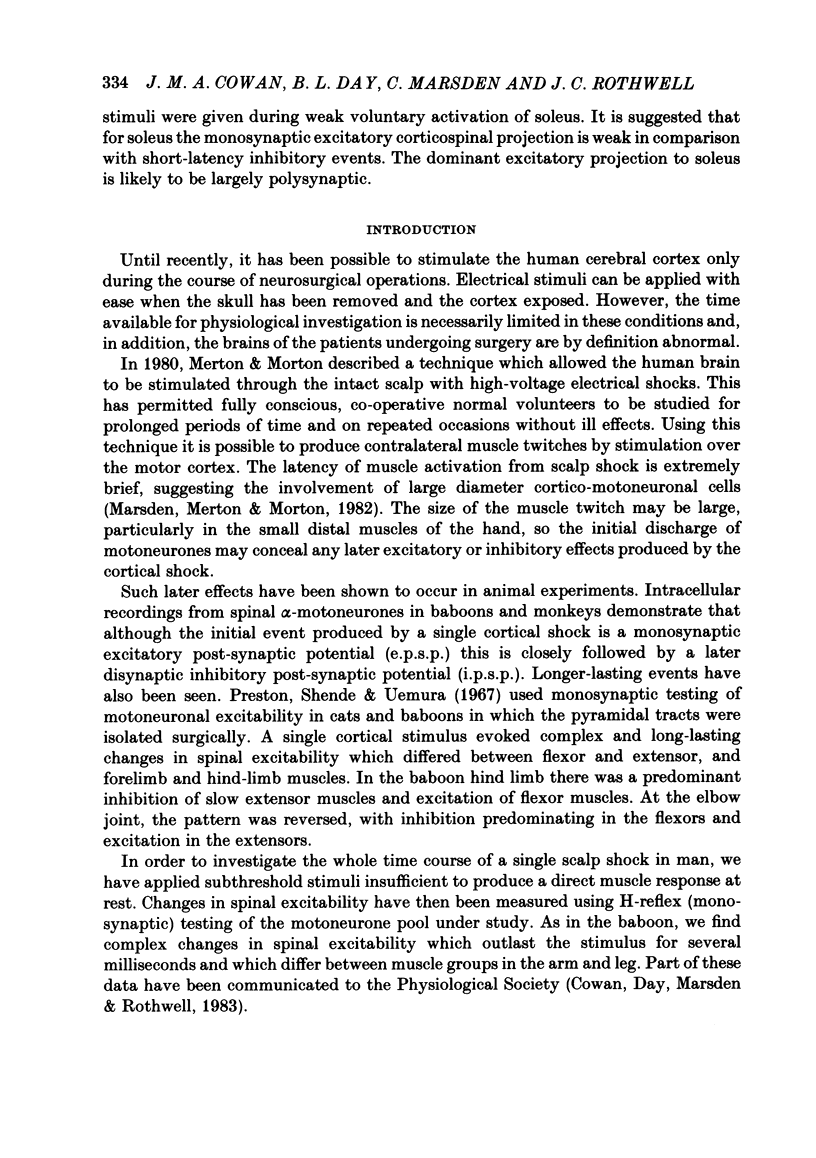
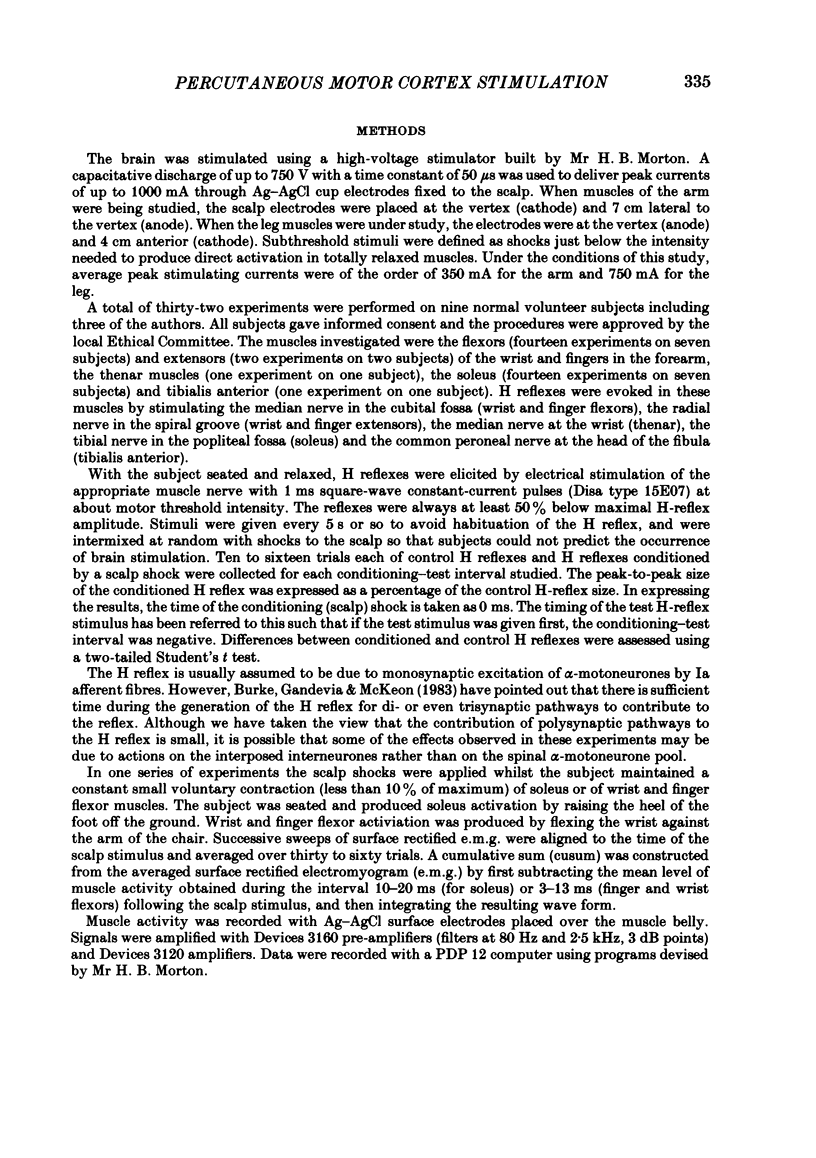
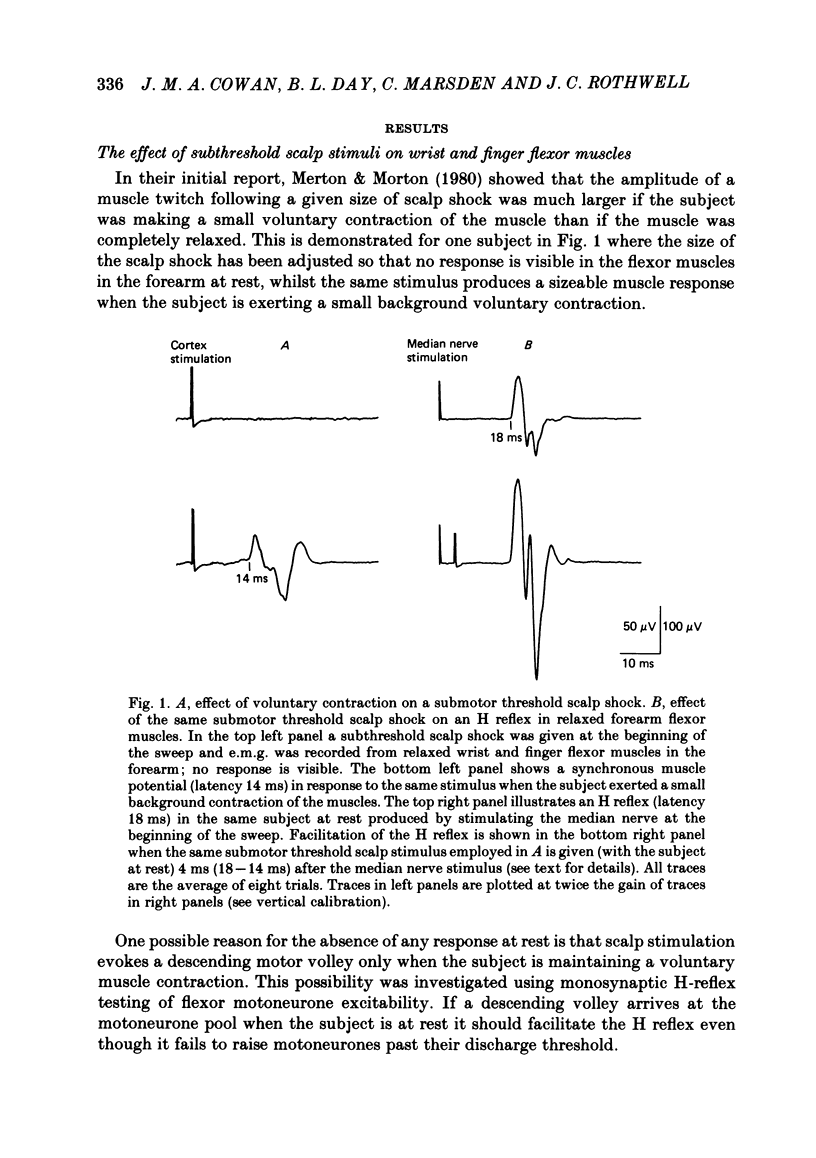
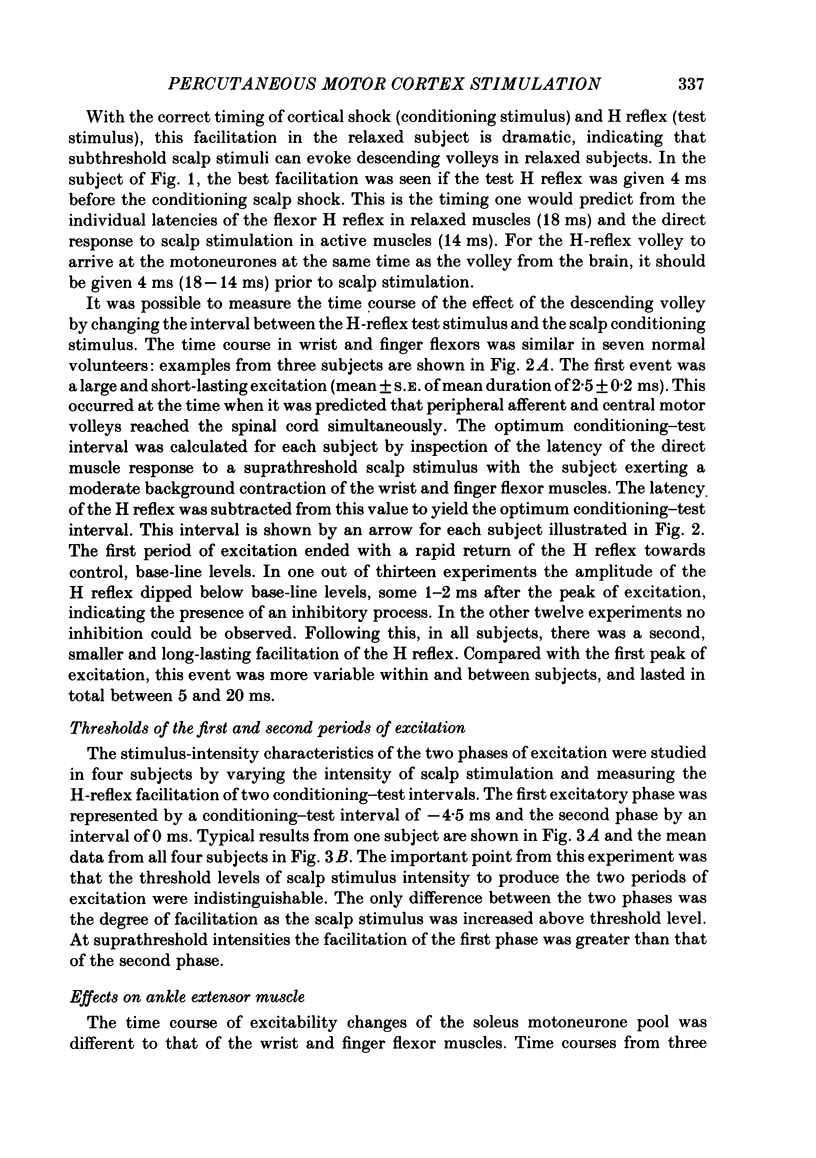
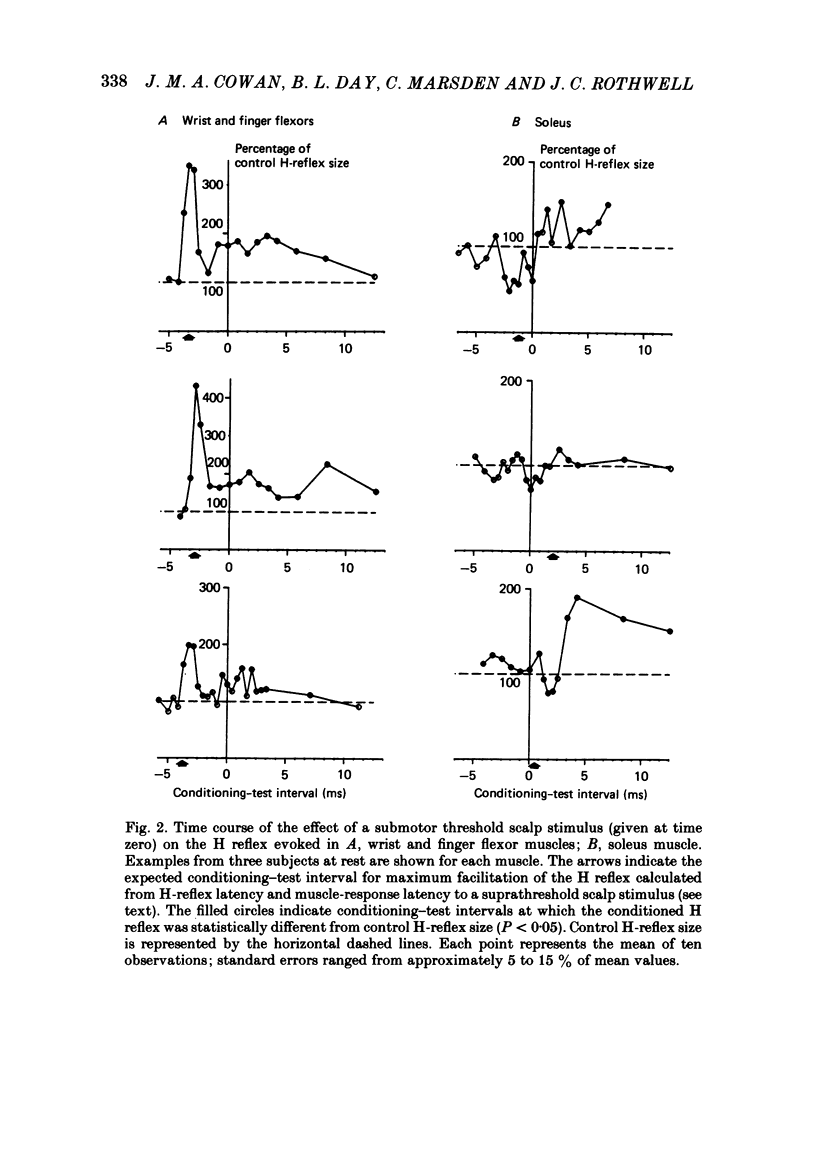
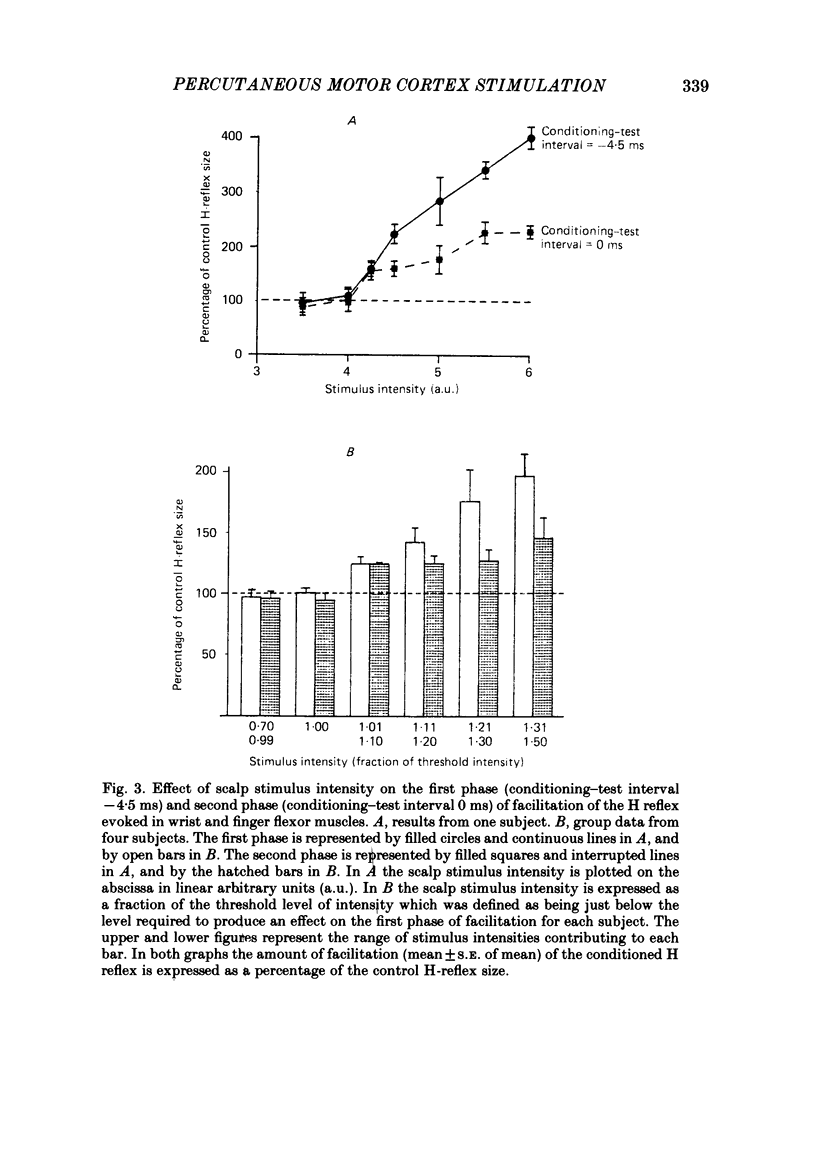
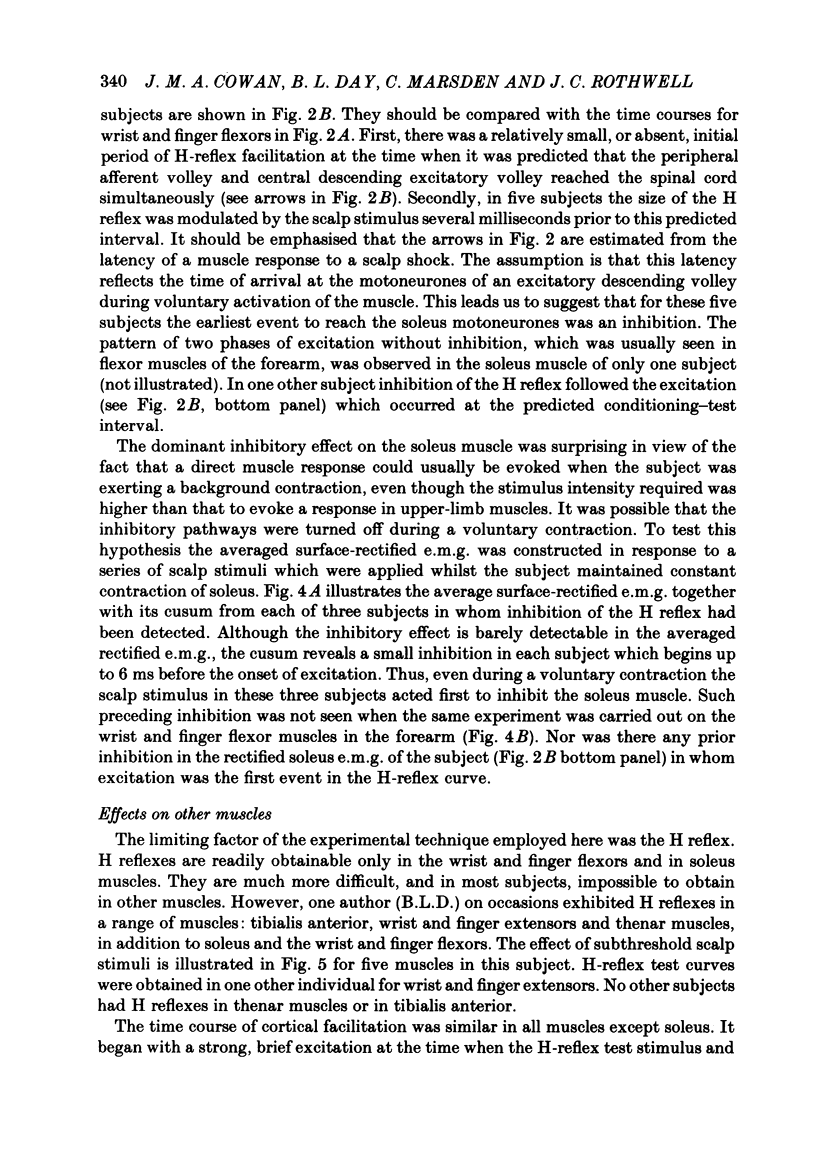
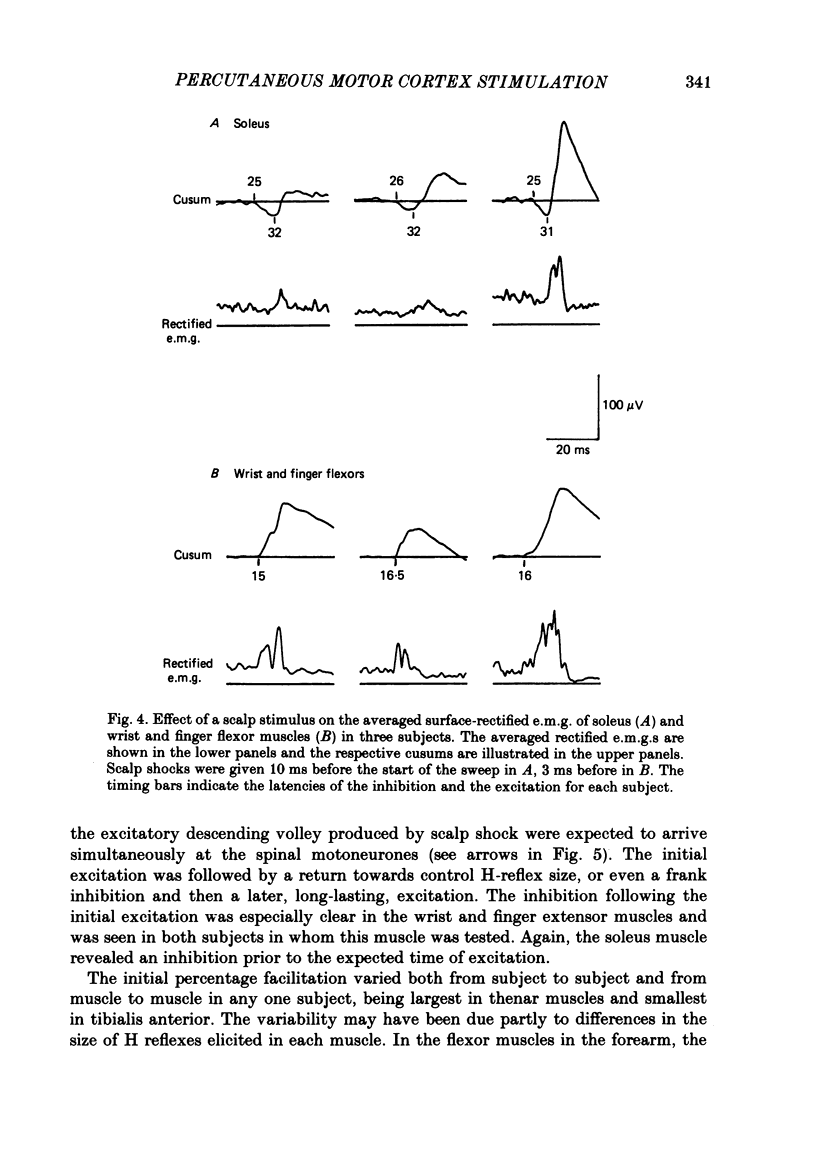
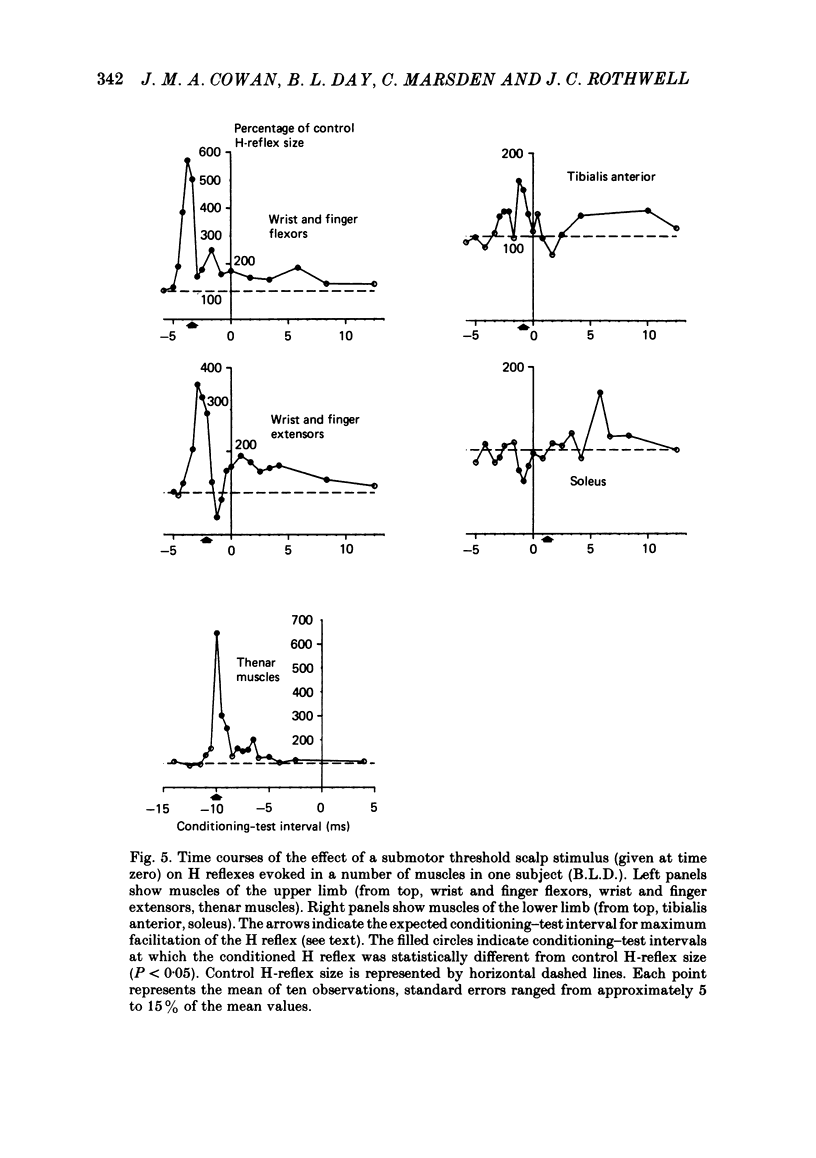
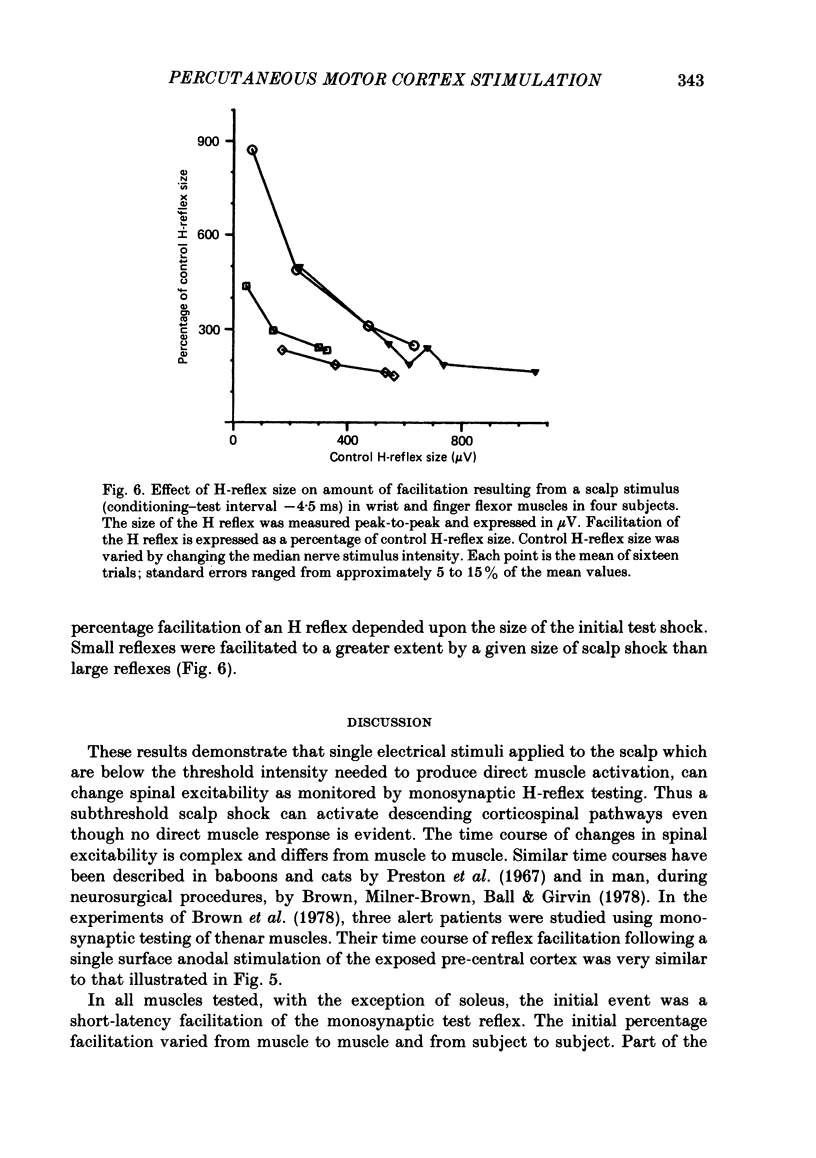
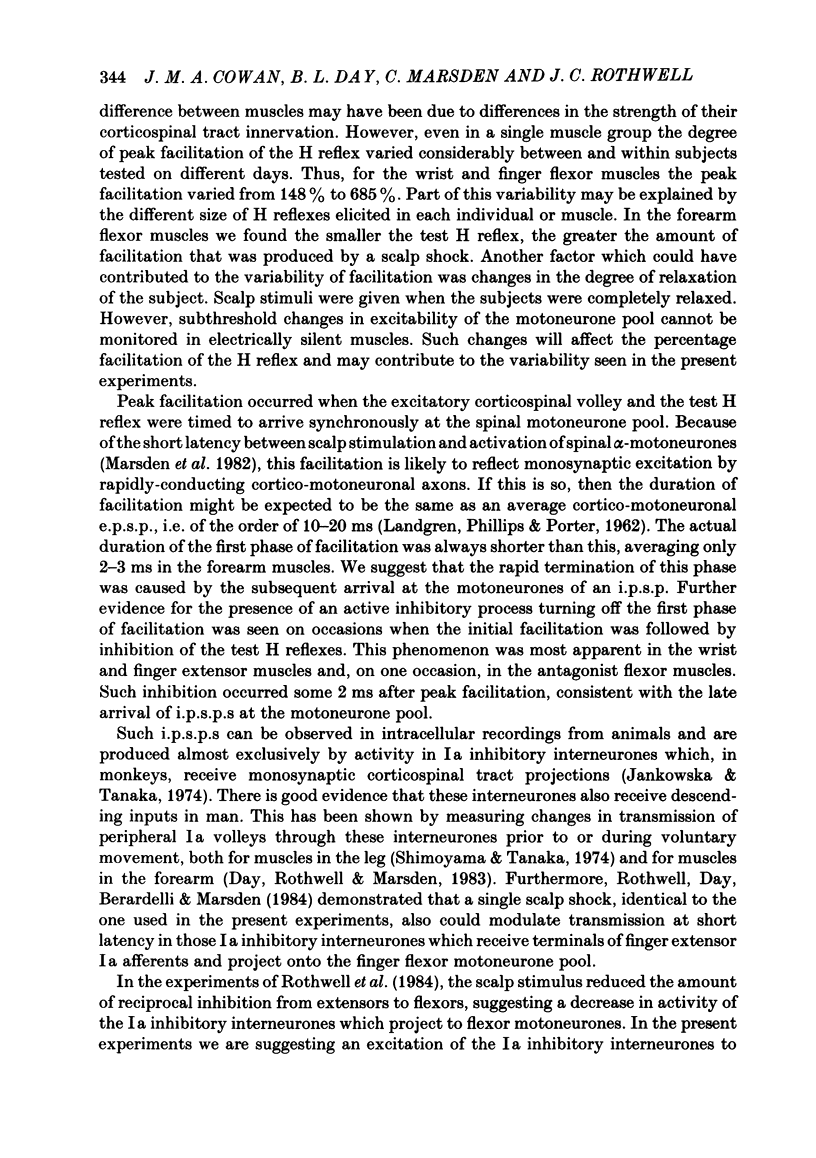
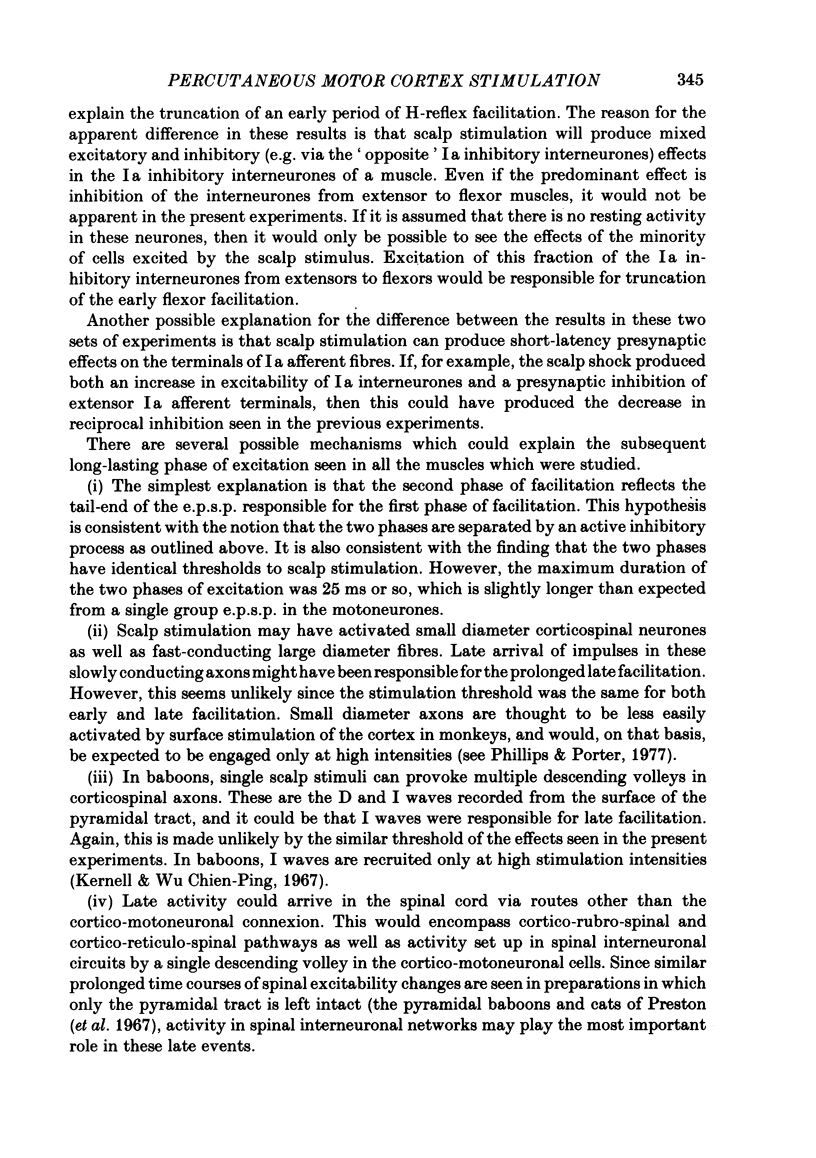
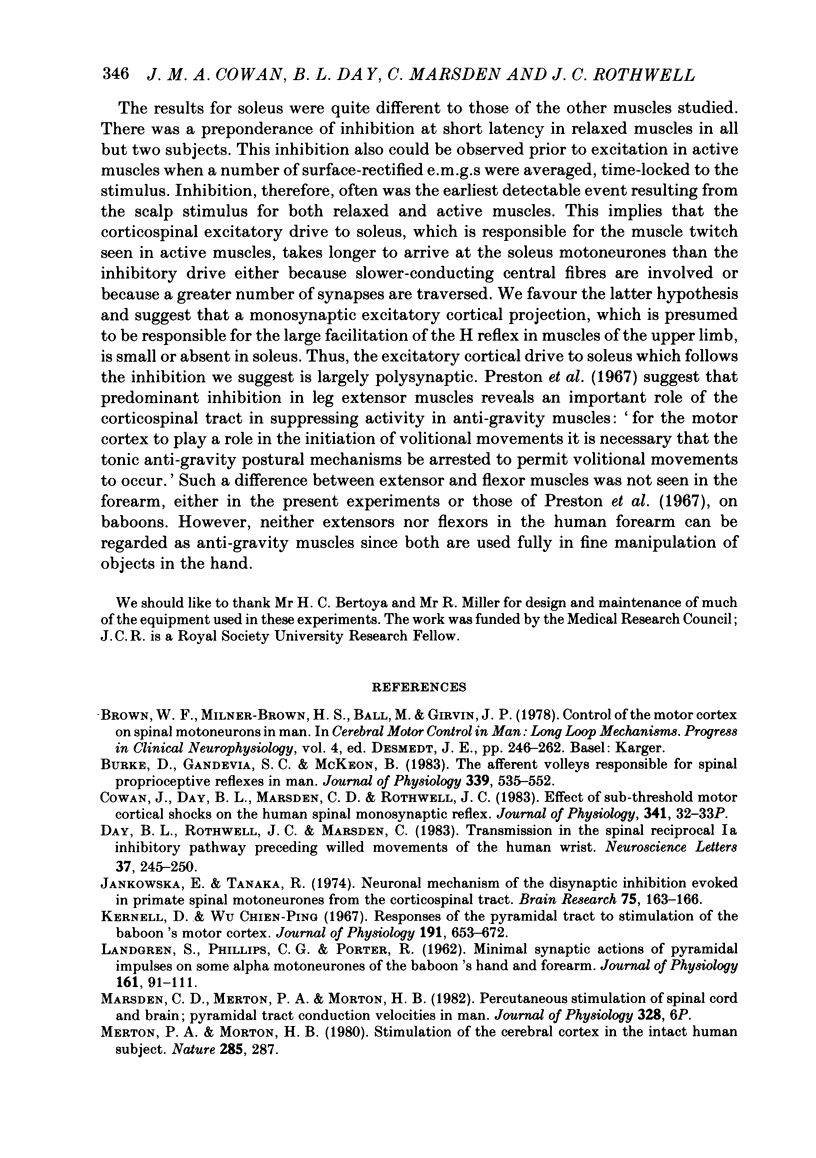
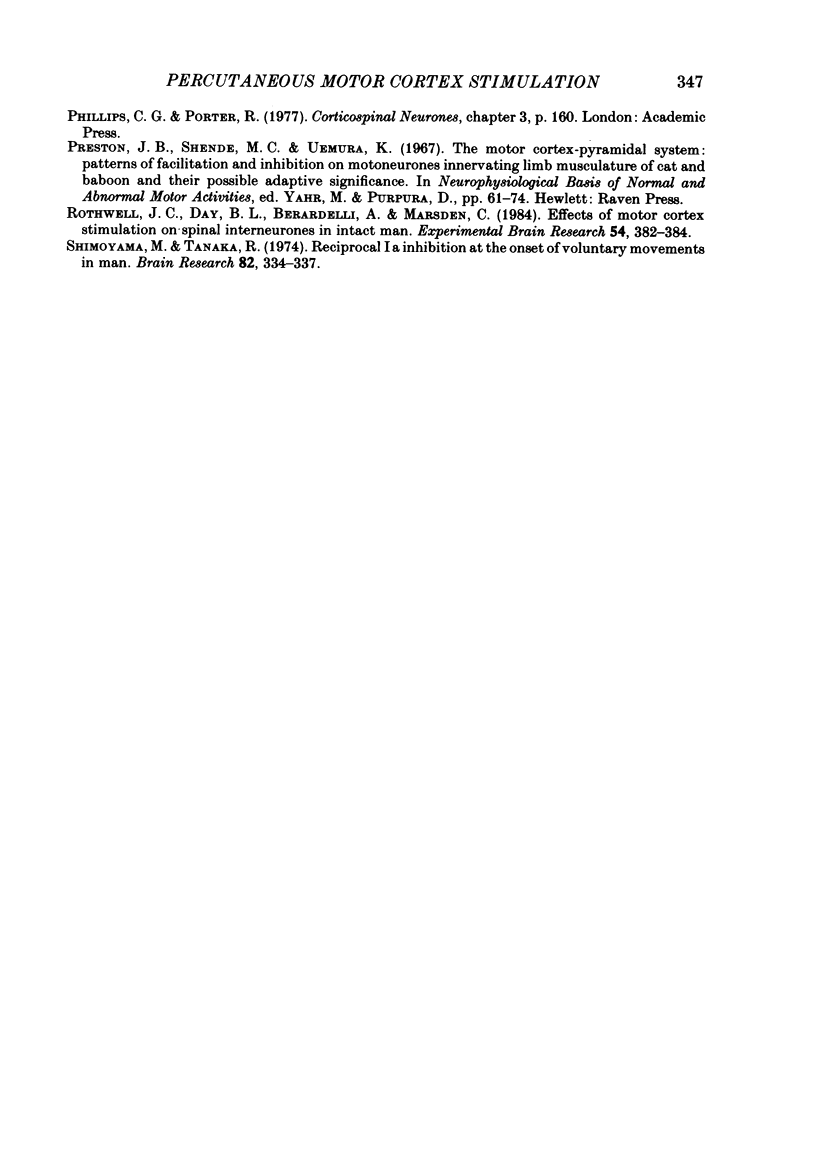
Selected References
These references are in PubMed. This may not be the complete list of references from this article.
- Burke D., Gandevia S. C., McKeon B. The afferent volleys responsible for spinal proprioceptive reflexes in man. J Physiol. 1983 Jun;339:535–552. doi: 10.1113/jphysiol.1983.sp014732. [DOI] [PMC free article] [PubMed] [Google Scholar]
- Day B. L., Rothwell J. C., Marsden C. D. Transmission in the spinal reciprocal Ia inhibitory pathway preceding willed movements of the human wrist. Neurosci Lett. 1983 Jun 30;37(3):245–250. doi: 10.1016/0304-3940(83)90438-x. [DOI] [PubMed] [Google Scholar]
- Jankowska E., Tanaka R. Neuronal mechanism of the disynaptic inhibition evoked in primate spinal motoneurones from the corticospinal tract. Brain Res. 1974 Jul 19;75(1):163–166. doi: 10.1016/0006-8993(74)90778-1. [DOI] [PubMed] [Google Scholar]
- Kernell D., Chien-Ping W. U. Responses of the pyramidal tract to stimulation of the baboon's motor cortex. J Physiol. 1967 Aug;191(3):653–672. doi: 10.1113/jphysiol.1967.sp008273. [DOI] [PMC free article] [PubMed] [Google Scholar]
- LANDGREN S., PHILLIPS C. G., PORTER R. Minimal synaptic actions of pyramidal impulses on some alpha motoneurones of the baboon's hand and forearm. J Physiol. 1962 Apr;161:91–111. doi: 10.1113/jphysiol.1962.sp006875. [DOI] [PMC free article] [PubMed] [Google Scholar]
- Rothwell J. C., Day B. L., Berardelli A., Marsden C. D. Effects of motor cortex stimulation on spinal interneurones in intact man. Exp Brain Res. 1984;54(2):382–384. doi: 10.1007/BF00236241. [DOI] [PubMed] [Google Scholar]
- Simoyama M., Tanaka R. Reciprocal La inhibition at the onset of voluntary movements in man. Brain Res. 1974 Dec 27;82(2):334–337. doi: 10.1016/0006-8993(74)90615-5. [DOI] [PubMed] [Google Scholar]
- Structural aspects of recognition and assembly in biological macromolecules. Nature. 1980 May 29;285(5763):287–288. doi: 10.1038/285287a0. [DOI] [PubMed] [Google Scholar]


